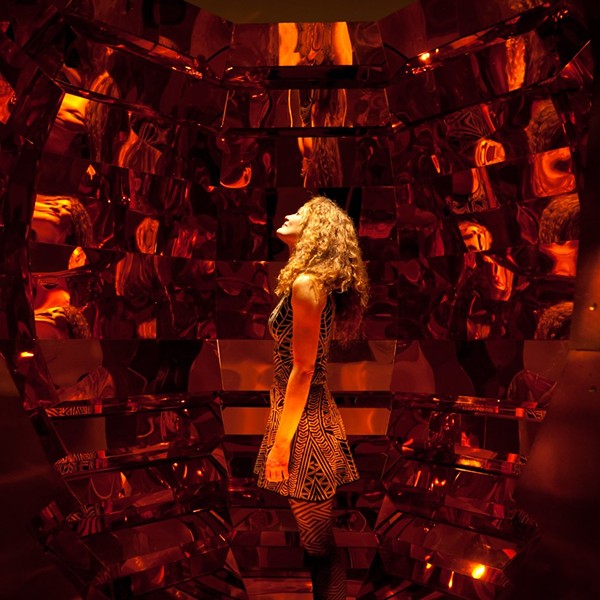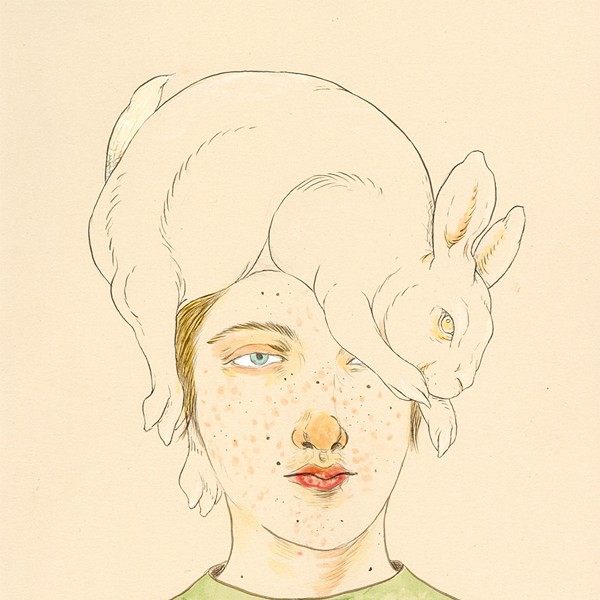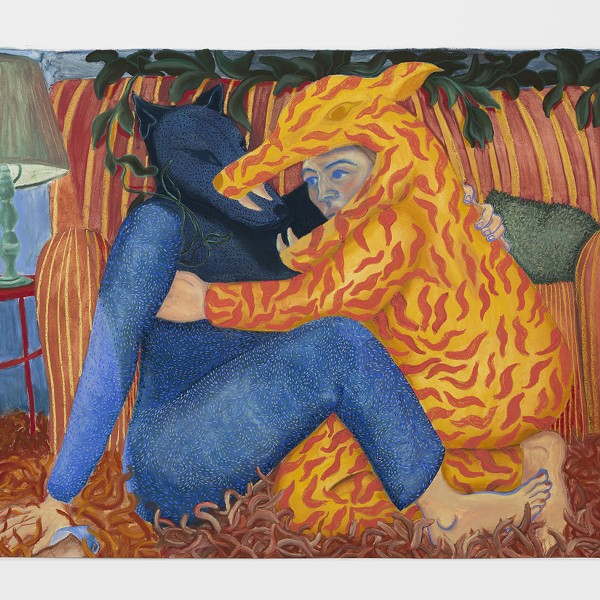“A lot of this show, the work is about sitting down and taking time,” says Jon Beacham, co-owner of Hermitage, a poetry bookstore in Beacon, New York. Besides collecting books, Beacham is an artist. He has collaborated with Kensie Duffy on “Kulan,” a show of works on paper appearing at the store’s gallery. “Kulan” means “intensity”
in Chinese. Also it’s the word for an Asiatic wild ass.
The show began as a gift. Duffy typed four spontaneous pieces for Beacham, who had the urge to reply
by adding collage to them.
Yes, you read that correctly. Duffy typed, on a Royal typewriter—in fact, a wide-carriage machine which
can accommodate a sheet of paper up to 20 inches wide. “Kulan” represents the rediscovery of typing by
young artists. (Beacham is 28, Duffy 25.) A typewriter, with its keys, levers and gears, opens up possibilities that Microsoft Word does not.
For one thing, a typewriter is closer to sculpture. Duffy often types without a ribbon, making tiny indentations
in the paper—like words chiseled into marble. Or he will, on some lines, rub the typewriter ribbon over the
words, almost like Dégas drawing with charcoal.
Duffy typed the entire text of The Sound And The Fury by William Faulkner, without a ribbon. It appears in
four glass boxes in the show. In fact, The Sound and the Fury is the only Faulkner book missing a manuscript,
so Duffy is fi lling a void in American literature.
Currently, Duffy is typing James Agee’s Let Us Now Praise Famous Men—on newsprint, which is how the
author wished to publish it, so that the tenant farmers he wrote about could afford to buy it.
(The publisher refused.) One or both of the manuscripts will appear at Hermitage in March; the works exhibited will change in the course of the show.
The show also features Return, a silent 16mm fi lm by Beacham, which he will screen on request. “Filmmaking for me acts as a notetaking, a very precision notetaking,” he observes. “Basically the footage is collected through going on walks, observing things, and documenting them, really. And I usually don’t show my fi lms in group situations—more like one-onone.” Beacham edits the fi lms by hand, on an oldfashioned
splicer.
The collaborators met while working at neighboring bookstores near Union Square in
Manhattan. Beacham worked at Alabaster Books, Duffy at the Strand. The two became aesthetic
scavengers, supplementing their meager incomes by fi nding rare books and selling
them to other stores. Some of the pictures from scavenged books appear in “Kulan.”
Last December, Beacham opened Hermitage in Beacon, with a partner. The
store specializes in small press poetry books published between the 1950s and the 1970s.
“There’s probably 600, 700 books in the shop—but every book is there for a reason,”
Beacham says.
The name of the store suggests Beacham’s vision of a quiet place to make art. “We wanted the
house to be a hermitage, inspired by Chinese hermits of centuries ago, poet-monks living in their hermitages,
their tumble-down huts,” Beacham explains. “It has nothing to do with the place in Russia, the Hermitage. No,
it’s the idea of a refuge.”
“Kulan” will appear at Hermitage, 12 Tioronda Avenue in
Beacon through April 6. (845) 765-1650;
http://hermitagebeacon.googlepages.com.















